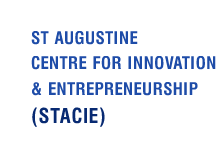The St. Augustine Centre for Innovation and Entrepreneurship (STACIE), University of the West Indies (UWI) in partnership with the Inter American Development Bank (IDB) and UWI Solutions for Developing Countries (SODECO) hosted a Terrestrial Laser Scanner (TLS) training workshop for the enhancement of monitoring, reporting and verification (MRV) of mangrove ecosystems. This training is part of the IDB’s United Kingdom (UK) DEFRA Blue Carbon Fund project being executed by STACIE, UWI. This training workshop was held in Jamaica from June 3 -7, 2024 at the IDB office, with field training in Southern Clarendon.
On Day 1 there was a gathering of key stakeholders and beneficiaries. Mr. Lorenzo Escondeur, Chief of Operations, IDB opened with the importance of the blue economy and stressed that the valuation and management of the mangroves was important for restoration efforts on Small Island Developing States (SIDS). There is a limited capacity that exists in the region to monitor these systems so it is timely to bring together this cadre of people in the region. These innovative actions would generate new and critical information to advance understanding and development in these countries.
Dr. Graham King, Director, STACIE, UWI, St. Augustine, highlighted that this project laid the foundation for a coherent approach to quantifying and tracking the carbon stored in mangroves, that will be used right around the Caribbean basin. It is a collaboration between the University of the West Indies and project teams in Panama, Columbia, Jamaica and Suriname, and so it goes well beyond just the typical English-speaking Caribbean. A Community of Practice has been formed that aims to lead the world with these ground-breaking approaches. Dr. King made the link between blue carbon and methane emissions in the mangroves to the increase in global warming and climate change. The MRV project measured the extent to which five projects in the region can restore the mangroves and sought to overcome the complexities of the unique systems.
Mr. Kadeem Griffiths-Reid, First Secretary, Access to Climate Finance, Kingston, British High Commission served as a lead on the task force for climate finance and also alluded to building capacity on climate change resilience, not only due to the profound impact on biodiversity but the human nature of the threat as it relates to poverty, food and water. Sustainable management of coastal ecosystems can lead to tangible recovery. He was pleased to see the strength of the partnership between SODECO and the IDB and the workshop was geared toward supporting the work.
Senator the Honourable Matthew Samuda, Minister of Environment, Jamaica, also focused on the human nature of the effects of climate change. He noted that economic growth is impeded by the effects of climate change, citing that 20% of the GDP generated is from coastal communities and 70% of Jamaica live within 5 km of the sea. The loss of mangroves have catastrophic effects as they are a natural defense against disasters such as flooding and hurricanes. He was pleased to indicate that in Jamaica, over 1,000 hectares of mangroves were restored. However, continuous measurement facilitates continuous improvement as NDCs and policies iteratively become larger in scope. Effective and transparent management allows resources to be used effectively to strengthen climate change actions.
Professor Terrence Forrester from UWI, SODECO sensitized persons about the dead and desiccated mangroves which were being investigated for the cause and solution. The UWI SODECO project engaged several stakeholders and exemplified the importance of public private partnership (PPP) for such a complexed project. The site characterization and restoration plan was completed but engineering of the restoration and monitoring was underway.
Mr. Gerard Alleng, Project Team Lead, IDB Jamaica closed by saying site specific information gathered can be integrated into NDCs and policies. The programme was being continuously improved with the goal of development of the standardized MRV methodology.

From left: Lorenzo Escondeur (IDB); Kadeem Griffiths-Reid (British High Commission); Priya Ramsumair-John (IDB); Matthew Samuda (Minister of Environment); Graham King (UWI, STA); Gerard Alleng (IDB); Terrence Forrester (UWI, SODECO); Avagay Simpson (IDB): Angeli Williams (UWI, SODECO).
Mr. Hamish Asmath, Consultant on the IDB MRV Project in Trinidad gave an overview of the TLS Method and delivered field based and classroom based training. He discussed the importance of species and location specific allometric equations to get accurate carbon estimates that has been verified by destructive sampling. Open source software for processing of TLS data and best practices for care of the G2 BLK 360 scanner were recommended.

On the field, Mr. Asmath pointed out some key unique features of the Jamaican mangroves which introduce nuances in the data collection
- Wind movements can duplicate the tree parts causing an overestimate of the carbon
- The targets can be planted deep to be at the level of the scanner but the bedrock prohibits deep penetration
- Horizontally growing mangroves require special target placement and they can be attached to the tree of interest
- The soil needs to be loosened in dry, desiccated areas for example in those restoration sites
- At least three targets should be captured between each scan, being mindful of surrounding foliage blocking the targets in denser areas
- Some mangroves are stunted in growth but a range of heights should be measured
On Day 3 a tree that was scanned in 2019 was rescanned to measure the difference. On Day 4, participants were taken to a once dry and desiccated mangrove region in which hydrology works were conducted. While the restoration site evoked alarm, this was incomparable to some of the more arid and barren sites scheduled for restoration. This highlighted the need for restoration efforts and verification of the effectiveness and continuation of these efforts.


On Day 5, participants worked on data processing of the various species of mangroves in parallel. Participants from UWI, SODECO, Forestry Department and NEPA were very enthusiastic and receptive to the training. It is anticipated that these learnings can be incorporated into their work and make a valuable contribution to Blue Carbon MRV.











